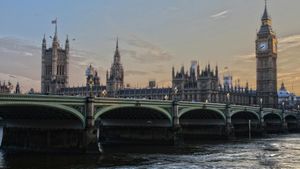HYDERABAD: The Hyderabad Metropolitan Development Authority (HYDRAA) took decisive action on February 3, demolishing unauthorized constructions and reclaiming government land from encroachers at Shamshabad. This move followed multiple complaints from local residents, who expressed concerns over the encroachment of public parks and roads.
Officials reported the demolition of illegal structures occupying 998 square yards of parkland at Southern Paradise, Sri Sampath Nagar. The agency also addressed complaints concerning encroaching walls built on public roads, particularly in Cape Town-2 Colony, located within Ootpally village.
HYDRAA Commissioner AV Ranganath was actively involved during the weekly Prajavani program, which provided citizens the platform to air their grievances. On this day alone, he received 71 complaints, the bulk relating to park and road encroachments. Following these discussions, Ranganath instructed officials to take necessary actions against the violations.
Earlier incidents had raised similar alarms. Reports indicated illegal fence constructions and unverified ownership claims leading to disputes among residents. Concerns peaked when it was revealed during the Prajavani program held at Buddha Bhavan, where previous complaints were pooled; 85 grievances were documented on January 21, highlighting the persistence of encroachment issues across Hyderabad.
Among the voices of concern was Murlidhar Reddy, who described his struggles with land encroachment dating back to 1986. “I purchased a plot at Badangpet village, but Anand Reddy occupied it and erected a compound wall. I raised complaints at various municipal offices, but it didn’t help,” Reddy lamented. He emphasized the urgency of having his plot reclaimed, indicating the frustration felt by constituents grappling with overlapping land rights and encroachment.
Ranganath reportedly assured Reddy and others present at the Prajavani program of proactive measures to resolve these long-standing issues. He stated, “I will personally oversee the resolution of these complaints to uphold land rights and restore public property.” This commitment echoes the agency’s broader goals to not only address complaints but to deter future illegal encroachments.
Beyond immediate actions, additional repercussions may arise for illegal land developers. Due to repeated violations, officials indicated intentions to file First Information Reports (FIR) at local police stations, underlining the seriousness with which HYDRAA interprets these issues.
The impact of these illegal constructions extends beyond individual properties, affecting community access to parks and public spaces. Ranga Reddy, another complainant, expressed optimism post-demolition, stating, “I believe this is just the beginning. We need our parks back for families and children.” His sentiments reflect the community's urgent need for defensible public spaces.
HYDRAA's management of these encroachment issues signifies more than just immediate demolitions; it reasserts the authority of government mandates meant to protect community interests. The reclamation of park land not only restores local environments but serves as emblematic of broader commitments to urban planning and public resource integrity.
Residents have welcomed the actions taken as they echo their enduring battle against land usurpations, with many eagerly watching for future agency actions. Ranganath's leadership in the face of mounting complaints has instilled hope within local communities—especially as discussions about more extensive urban planning reforms arise.
The continued efforts by HYDRAA provide not just temporary relief but signal intention toward sustainable urban management and the preservation of public utilities against encroachment challenges. While Urban authorities grapple with the persistence of illegal constructions, resident collaboration through programs like Prajavani is proving invaluable, shedding light on local governance challenges.
Should these measures persist, the newfound principles of action by HYDRAA may fortify the community's ability to reclaim their rightful shared spaces, creating avenues for enhancement and beautification of urban environments.



